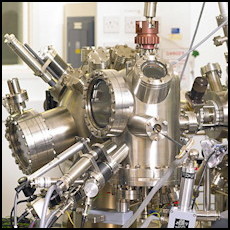Grants
In the decades since its initial release in 1994, the number of disciplines in which scanning microscopy has played a significant role has increased dramatically. Thus the development of analysis algorithms and improvements to the software that were concomitant with the expansion of the scanning microscopy facilities of the Surface Science Research Centre throughout the late 1990s naturally found applications in disciplines more diverse than just within the physical sciences.
Read more...
One of the advantages of Image SXM compared to the software supplied by manufacturers of scanning microscope systems is that it can display images from a number of different manufacturers — if a laboratory has more than one scanning microscope system, which is becoming increasingly common, then the ability to compare images obtained from different systems is very important. Collaborations with researchers using many types of scanning microscopes led to the support for 50 different SXM image file formats (plus 20 non-SXM file formats that various researchers have found to be useful).
Further applications of image analysis techniques were developed and incorporated into the framework of Image SXM. In addition to the software developments that targeted scanning microscopy, many of the image processing and analysis routines that were integrated into Image SXM were of more generic use. Despite the fact that some of these new developments had no particular relevance to scanning microscopy, the title of the software was by this time well established and so it was decided not to attempt to re-brand it. Many of the applications could still be described as microscopy in one sense or another, but some were quite distinct, such as the analysis of electron diffraction patterns (with images acquired from digital cameras) or the Earth's ocean currents (with images acquired from satellites).
